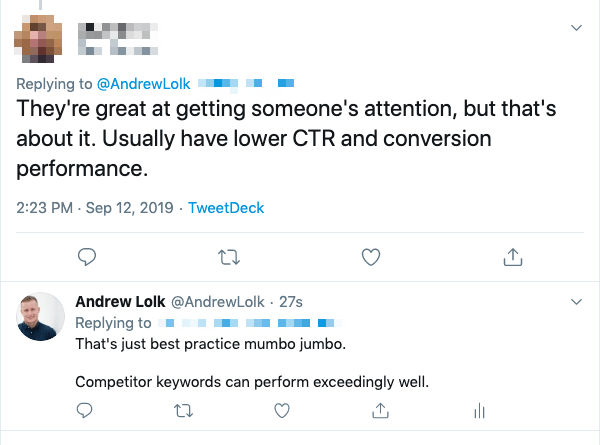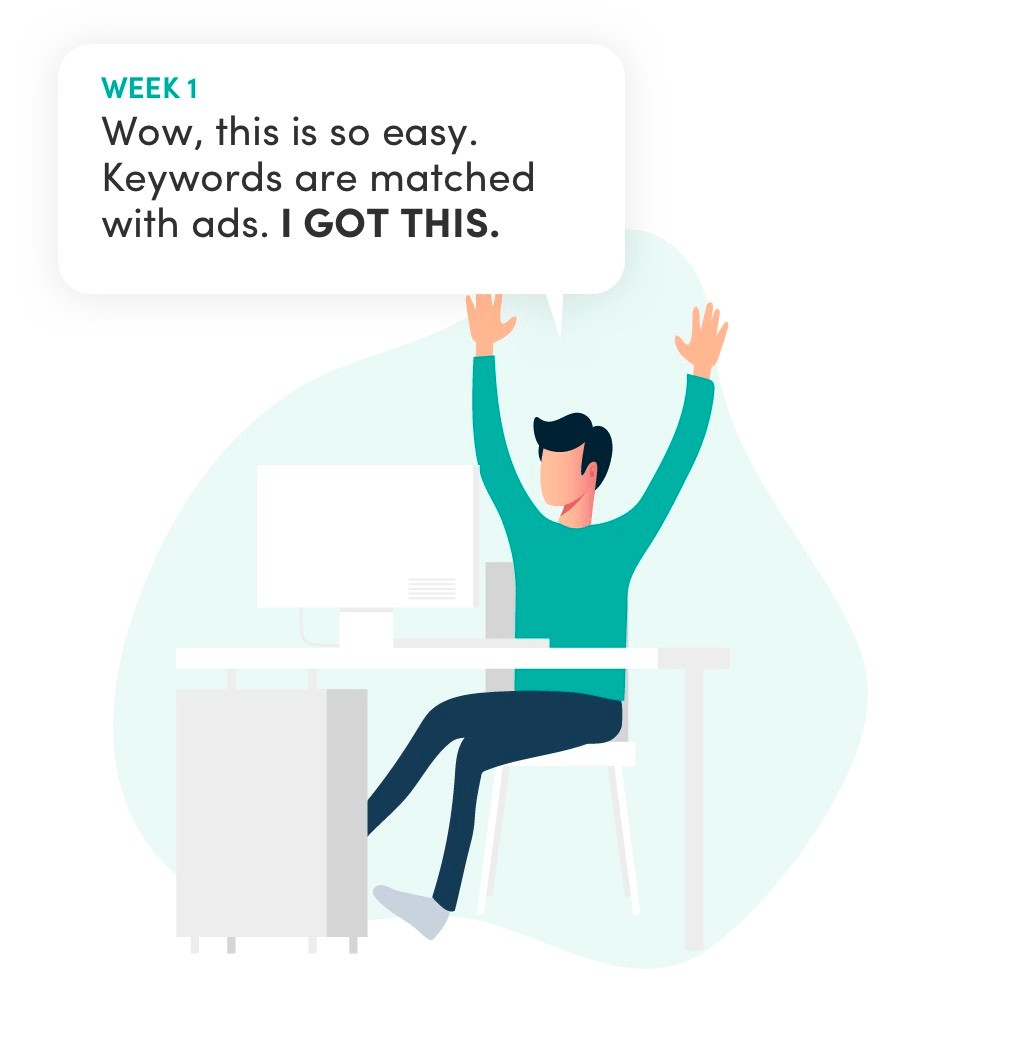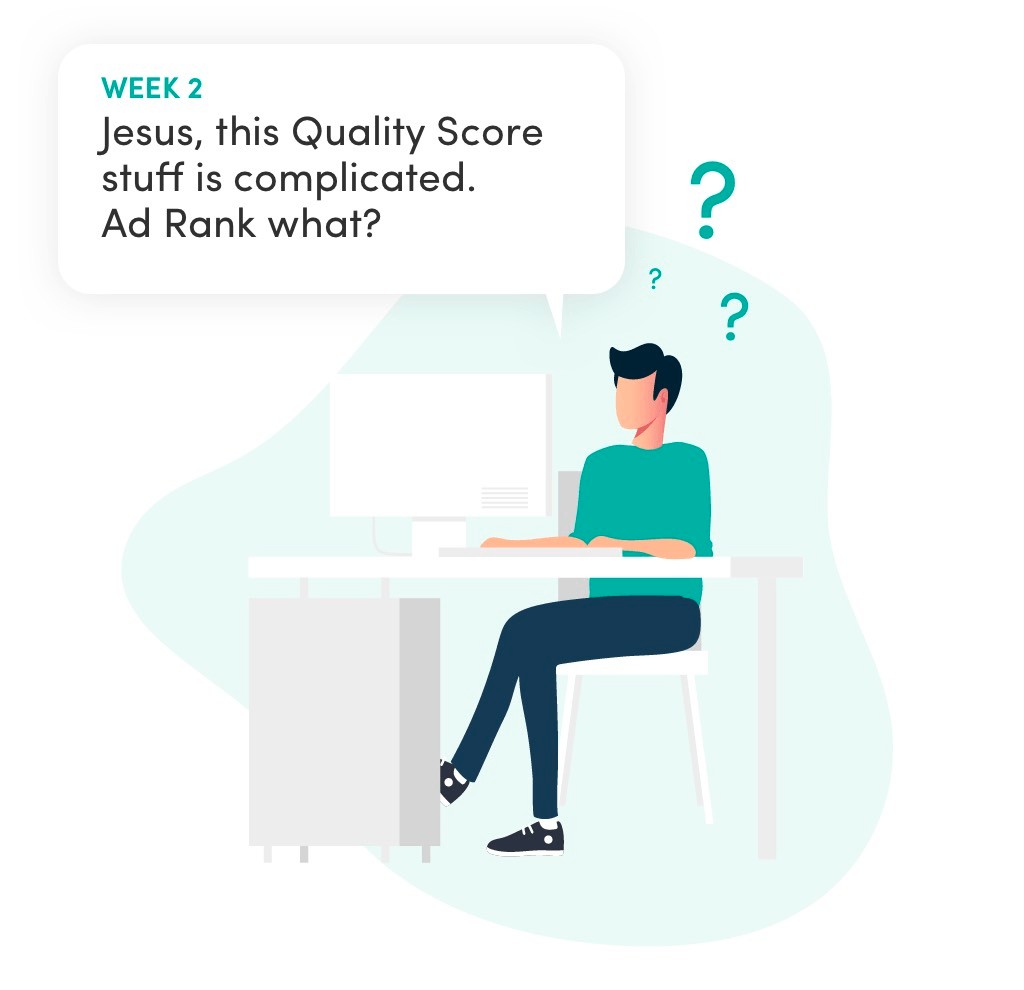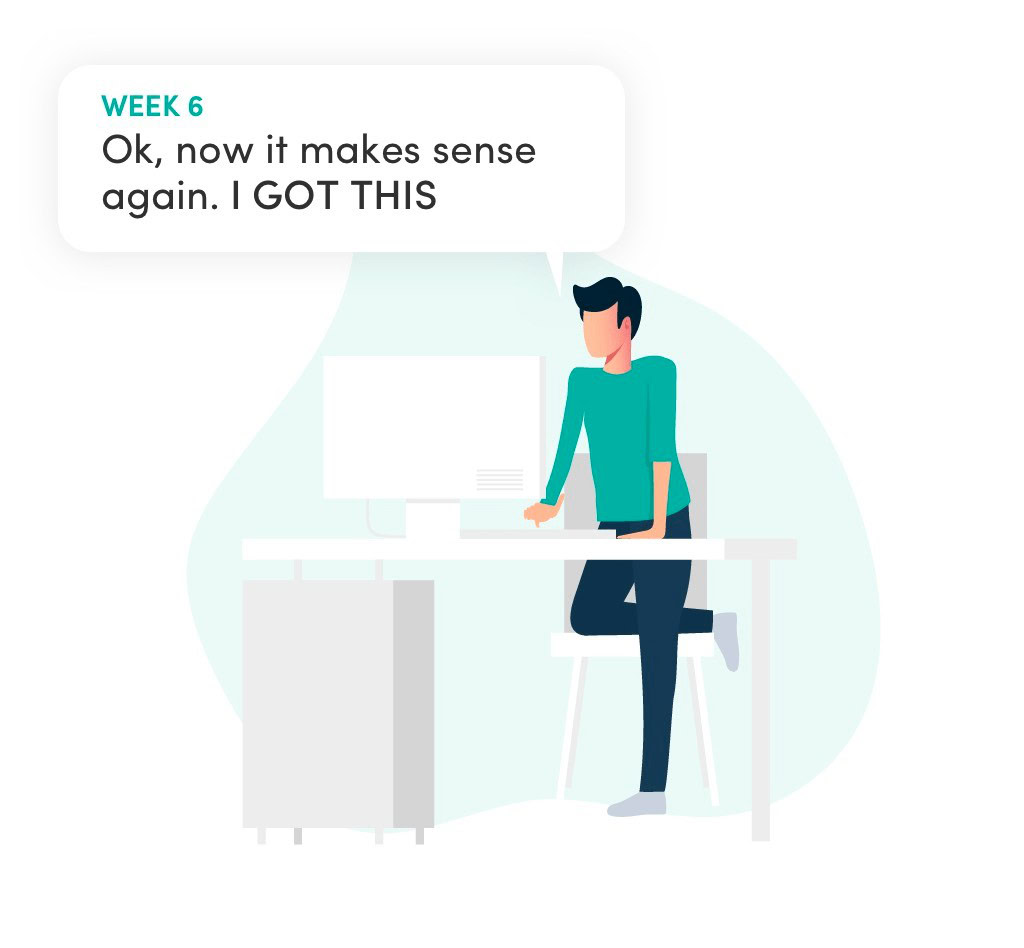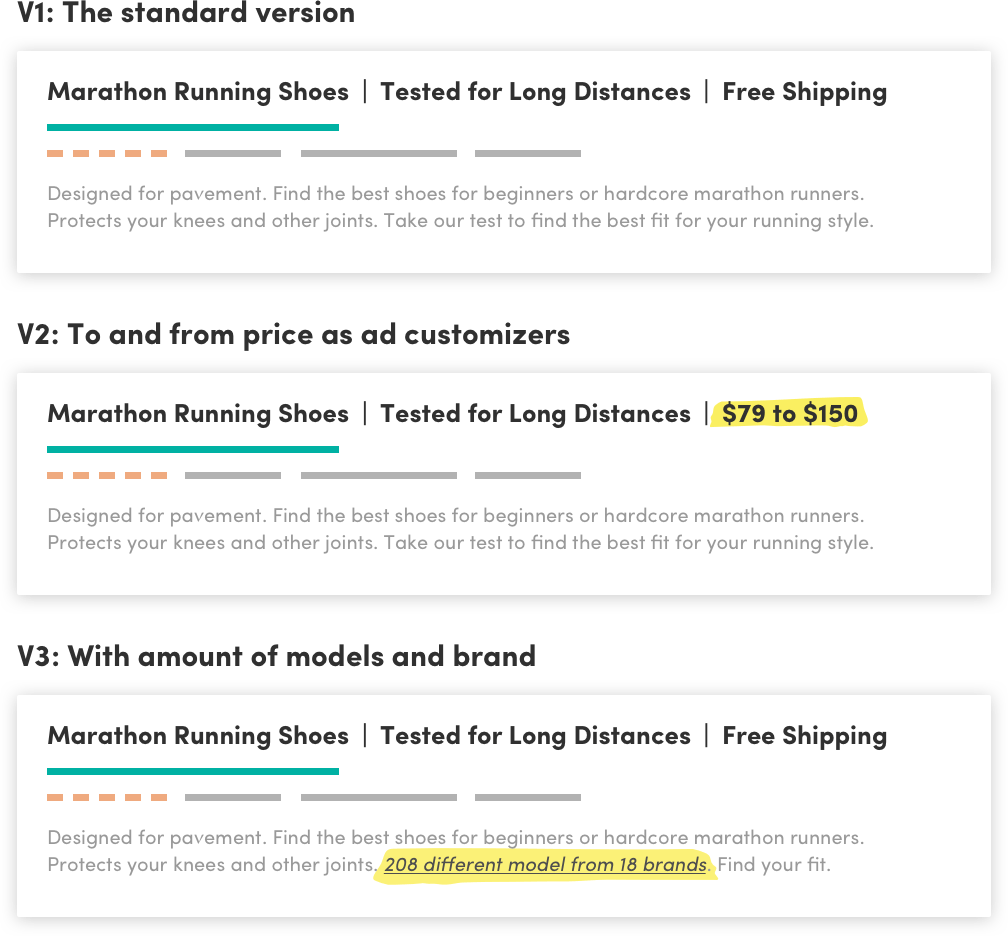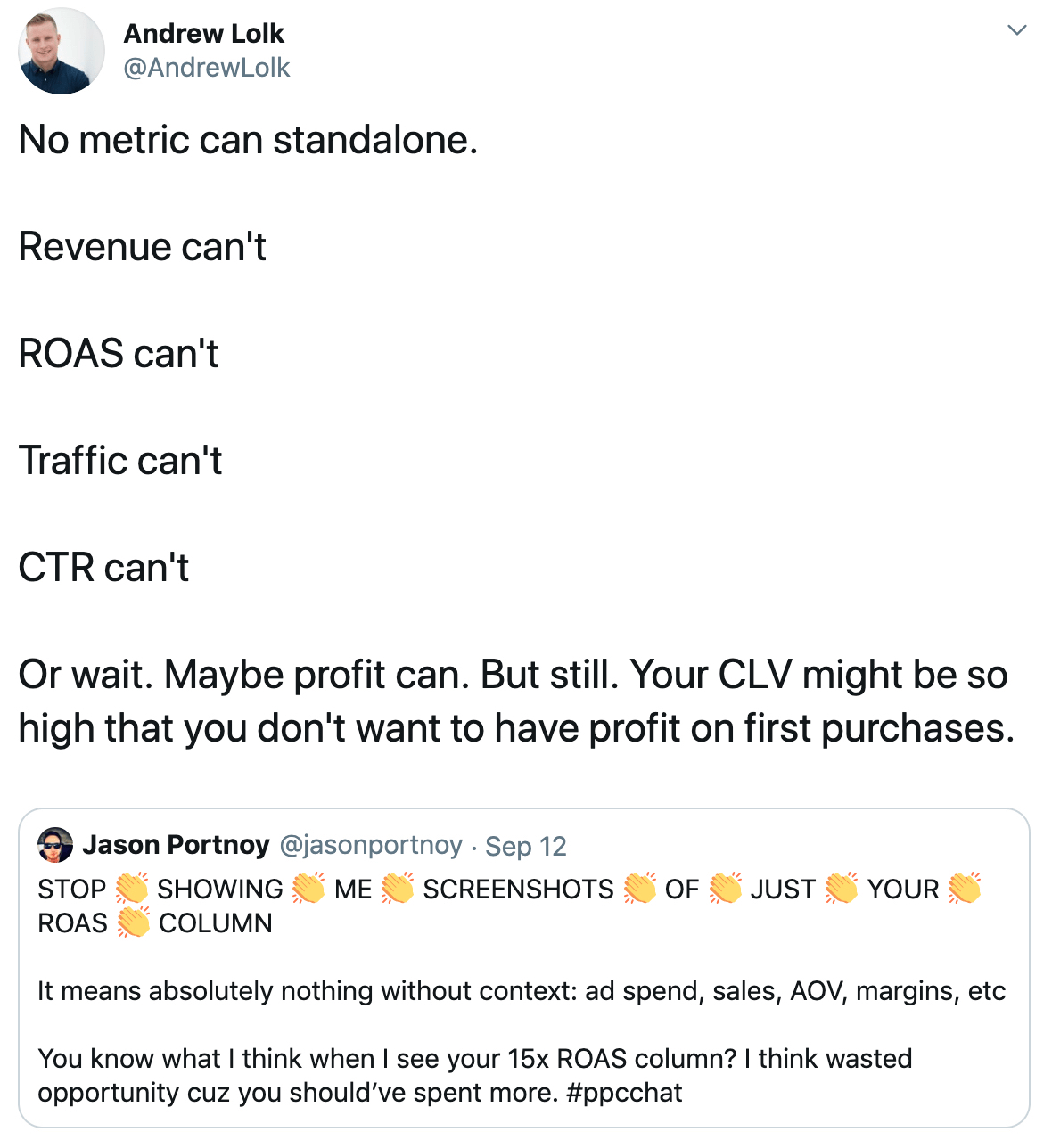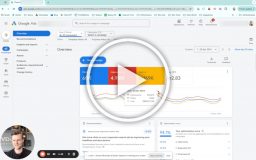You’d be surprised how little some of the best-known people in PPC practice daily. Heck, I wrote about PPC from 2014 to 2015 where I only managed a couple of accounts (although I sparred with +50 PPC managers regularly).
Just because the people you look to for advice don’t sharpen their skills daily, doesn’t mean they’re wrong.
It just makes us one-sided, and as a result, the advice you read can be too narrow.
And that might be a good thing.
You want the best practices you look to to be one-sided. The catch is knowing when it’s biased, so you can gauge whether it applies to your case.
Like if someone from the local B2B Lead Gen space started reading my blog posts. The majority of the advice I give could easily be applied in that context, but the rest is too focused on the eCommerce space.
But the important things stay the same.
Note: This post is not about bashing on Google’s own best practices, but to highlight issues about following general best practices or recommendations you can find, read, and hear both online and in person.
“Best Practices” Are Generic Advice Meant for the Masses
When Google provides best practices, they have to write for a range of skill levels—like for both beginner and intermediate advertisers. The same goes for most blog posts out there.
These are just a couple of examples of the top five posts on Google for various searches:
- 9 Tips for Writing Ads
- How To Write The Best Google Ads
- Google Ads Search Campaign Structure Best Practices
- Google Ads Keyword Match Types: Explained by Ex-Googlers
These are real headlines.
They all contain general advice. It’s all good advice; it’s just generic.
The authors of these posts wrote them like this because it would be challenging to focus on a single industry. Also, they couldn’t possibly write about all the potential scenarios within a single industry all in one blog post.
They couldn’t possibly write about all the potential scenarios within a single industry all in one blog post.
Yes, I know that I’m slightly exaggerating here, but you get my point.
It’s impossible to write for most scenarios. Trust me, I tried to do it in our processes at White Shark Media, and I had to give up.
When You Target Everybody, You Reach Nobody
The good old advertising saying also applies when reading blog posts.
So why is this bad?
The truth is that it’s not necessarily bad. I’m not black/white enough in my thinking to say that we should write a thousand different blog posts on how to write the perfect ad. We can get pretty far with a few useful best practice blog posts.
However, you need to be able to understand the advice you’re given and know when to apply it.
What about when it’s no longer for the masses? Intentionally or not, almost all the advice you get online is given without context.
One Person’s Best Practice Might Suck for Your Situation
This may be my biggest problem with best practices:
What you hear from someone on Twitter, in a Facebook Group, on an email list, a blog, or maybe even from your wife’s cousin who’s a marketing genius—will be biased based on experience.
If someone has seen success running a Google Ads campaign in Broad Match, with all keywords in a single ad group, then he will advise you to do the same (this is not a made-up example by the way).
It will be his best practice.
And the Internet is flooded with individual people’s best practices.
The example I brought up above might be a bit over the top, but what about this:
I, an eCommerce marketer, talk about how amazing Dynamic Search Ads (DSA) is. For readers in the B2B space, they will read that and go: Andrew recommends Dynamic Search Ads.- AWESOME! GO, GO, GO.
But I don’t recommend DSA campaigns for B2B advertisers in general.
I don’t even recommend that all eCommerce stores run Dynamic Search Ads.
Do you see my problem? Best practices, or advice, is only applicable if you know its context.
And so little advice online is given in the proper context.
Become so Good That Best Practices Are Merely Tools at Your Disposal
At least 250 PPC managers have gone through our training program at White Shark Media.
When you know when and how to break free from those best practices, then you become lethal.
I met with the training classes multiple times throughout the program, and this mindset was always evident.
- Week 1: Wow, this is so easy. Keywords are matched with ads. I GOT THIS.
- Week 2: Jesus, this Quality Score stuff is complicated. Ad Rank what?
- Week 4: SO MUCH STUFF TO LEARN
- Week 6: Ok, now it makes sense again. I GOT THIS
But the best practices we were teaching could only take them so far.
When you know the best practices of a field, you become good at it.
When you know when and how to break free from those best practices, then you become lethal.
Good Marketers Have Multiple Strategies
I’m known—let me rephrase—I want to be known for saying:
The difference between a good marketer and a bad marketer is that the good marketer knows his strategy might be wrong. The bad marketer will only have one strategy available, so he will never admit he might be wrong. But the good marketer has eight other strategies ready to try, so if one doesn’t work, he pulls another up from his toolbox.
At SavvyRevenue, we start with the strategy we believe will produce the best results using the best possible tactics.
At any given time, if you need to change the direction you must have a gameplan. If one strategy doesn’t work, then it’s time to move to the next best option.
Examples of Google Ads Best Practices Gone Wrong
Like Matt Umbro mentioned on Twitter:
We can’t even agree on what to call them. So to be clear, the best practices below are the ones I generally see again and again.
“Build SKAG Campaigns,” They Said
I’m all for SKAGs, and it’s the cornerstone of our search campaigns. In eCommerce, I genuinely feel that if you don’t run SKAGs most of the time, then you are doing it wrong.
But just doing SKAGs because someone says so is not smart. There are plenty of cases where SKAGs are overkill.
Many of the people who recommend running SKAG campaigns are managing huge accounts, and this type of campaign is the only way to stay sane.
Plus, if you run Search campaigns (i.e., inventory campaigns) built on a feed, then SKAGs really don’t take much more time to create.
What’s the Deal with Ad Customizers?
Ad Customizers have not yet reached the level of “best practice,” but it is something most eCommerce advertisers think of when planning a campaign.
Google tried to push them a lot once upon a time. Especially when Google Shopping Ads were newer, the craze was to get all the same data into text ads:
But again, that doesn’t mean your ads will perform better.
Do you really want to push the price as the main factor in your text ads?
Do people care about you having 208 different shoes?
Just because we can do something dynamically, does that mean we should?
Not necessarily.
Split Campaigns on Match Types
I have never really bought into the craze of running campaigns based on match types.
It can work well if you need to funnel more budget into the exact match (or whatever best-performing match type you have), or if you see a need to change the ad message from BMM to exact match.
But that’s also because I haven’t worked with a client case where it made sense. 80% of our clients give us unlimited budget if we just hit the monthly ROAS targets. So I have never needed to funnel budget into the best performing match type.
Another great suggestion is to use only broad match keywords in a standalone campaign combined with RLSA. Then it makes sense.
But as a standard suggestion on all campaigns for all accounts? Get out of here!
Use Automated Bidding
I looooove automated bidding.
Bidding is math (when you strip away all the details).
And computers are better at math than people.
So automated bidding should be better.
We know that Google is excellent at building algorithms. And Google has access to more data than everyone in Search, so they should be able to build the best automated bidding solution.
But automated bidding doesn’t work for all cases.
Should You Jump on Google’s Latest Shiny Object?
It’s not that any new thing from Google is good or bad.
It’s the mentality that everyone should jump on each new thing the minute it comes out.
I’ve always had the mindset of: Wait a few weeks, and read about the first experiences.
If a feature is naturally incredible, then, of course, it’s worth trying out ASAP.
But again, it shouldn’t be a best practice to jump on all of them, and certainly not right when they become available.
There is still one “newish” thing that most eCommerce advertisers have not started using that I still don’t write about to this day. It’s simply too valuable to keep to ourselves and our clients.
Your Quality Score is Important
I never think about Quality Score, and it’s horrible advice to give to people because it’s not actually true.
The truth is that Quality Score optimization is built into every single process we do at SavvyRevenue.
You could sub in any other standalone metric to the headline of this section: CTR, CPC, CVR, ROAS. None can stand alone:
Broad Match is Evil
Well, it is—most of the time.
But if you never try it, then it might not be evil.
And if you’ve run an account for a year on broad match combined with Google’s Smart Bidding, then it will most likely perform great.
It just cost you a ton of money to get to that point 🙂
Long Tail Keywords Are Gold
This is an example of an old best practice that never seems to die.
Yes, a keyword like “Nike trail running shoes” is better than “running shoes” if you only sell trail running shoes.
And yes, long-tail keywords are great.
Recommended read: Hacks, Methods, and Tools to Google Ads Keyword Research for eCommerce Stores
But does that mean that short-tail keywords are wrong or that you shouldn’t use them?
Tell that to some of the accounts we run where we have single-worded keywords generate hundreds of thousands of dollars in profitable revenue.
So yeah, stick to best practice on that one, so the competition stays low 😉
Always, or NEVER, Bid for Your Branded Terms
Oh, the great debate.
It was huge in August 2019 and continues to flare up from time to time.
I’m not going to get into it, but plenty of data shows that the value of being able to control and test your brand message through your ad more than makes up for the cost.
But there are plenty of examples where it would be stupid to run ads for your brand keyword.
“Just Bid Down Mobile by 20%,” They Said
Back in 2014(ish) mobile was still a relatively small amount of traffic. Google was talking about it being the year of mobile, and most marketers would just decrease bids on mobile by 20% with a bid adjustment and call it a day.
This tactic worked fairly well for a while when mobile was still below 20% of search volume.
Today, with mobile being over 80% of the search volume in some eCommerce markets, this is HORRIBLE advice.
And yet, we’re back at the fact that this might be excellent advice for some B2B industries still.
Recommended read: When Ecommerce Stores Should Separate Google Ads Campaigns by Device
In Conclusion, the Advice You Read Online Should Be Inspiration, Not Best Practice
You never know the context of which the advice you read has been given. On the SavvyRevenue blog, I have an advantage as I only speak to a particular market: B2C eCommerce.
And yet, there are plenty of caveats to what we suggest.
That’s why if you have ever discussed PPC with me in person, I surely have asked a bunch of questions before I give you my take.
You don’t have that option online, so you have to be your own filter and ask the questions.
When you ask for advice online, make sure you give the context of your question. That way, more people will be able to tell you what they think in that given context.
Want more posts like this in your inbox? Subscribe to our newsletter and never miss our latest blog posts.

